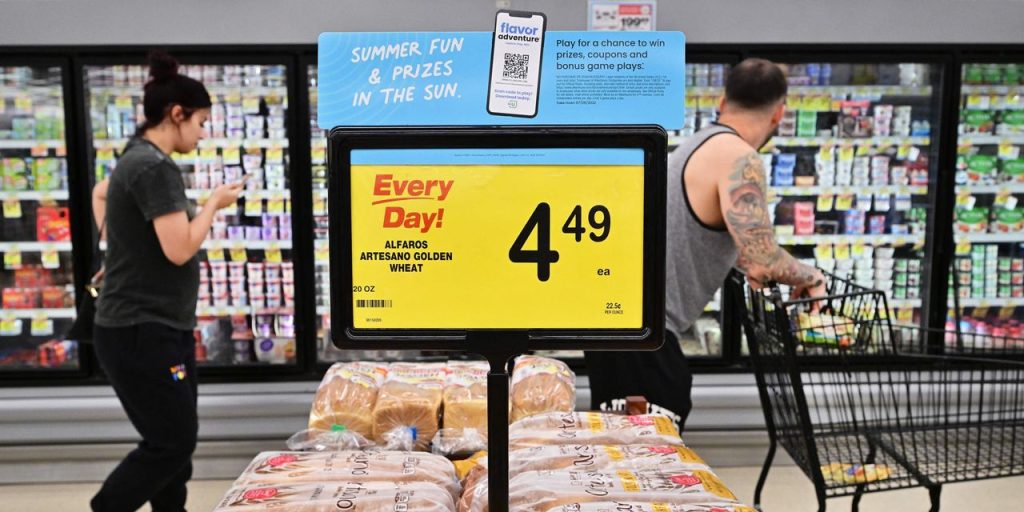As grocery prices continue to climb, more people said they were eating less, skipping meals or cutting down in other areas to manage food costs.
Prices for food at home rose 7.1% in April compared to last year, according to the latest government data released Wednesday. The year-over-year price increase was down from 8.3% in March and 10.1% in February, and price hikes were down to levels not seen since the start of 2022.
Manufactured foods, such as baked goods, continued to get more expensive. The pandemic and Russia’s invasion of Ukraine have been two major disruptions to the supply chain in the past few years — and caused prices for items from packaging to animal feed to rise.
An outbreak of avian flu last year pushed up prices for eggs, an important food staple. Egg prices rose 21% in April compared to last year. In March, egg prices rose 36% compared to 2022; they rose 55.4% between February 2022 and February 2023.
Food insecurity among low-income families
However, new consumer data also show that low-income families are facing record-high food insecurity. A study of those who use Provider, an app for low-income Americans that aims to help their finances, found that 57% of participants of the Supplemental Nutrition Assistance Program (SNAP) said that they had eaten less in April than in March.
That survey, released by the app’s owner, Propel, also found that 41% of respondents said they skipped meals in April — up from 29% the previous month. Nearly one-third, 31%, said they had to turn to food pantries in April — levels not seen since January 2021, according to Propel.
In March 2020, Congress authorized an increase in SNAP benefits as the COVID-19 pandemic was beginning. Those benefits gave some households up to $95 extra in monthly benefits, and ended at the end of February. While some states continued to offer expanded benefits through February and March, by April, all states had ended these benefits.
A majority of those receiving SNAP benefits (58%) reported that their monthly allocation only lasted them two weeks in April, according to a survey by Numerator, a consumer-data insights company. That’s compared to 41% who said the same in September 2022.
At the same time, low-income families are also facing a different tax season this year, as many pandemic-era tax refunds — such as the expanded version of child-tax credits — have been eliminated. As a result, families are seeing smaller refunds.
Tax season, Propel noted, is when many working Americans get their largest single infusion of money.
Related:
Where exactly each dollar you spend on food goes: farmers get 14 cents and 4 cents pays for packaging
‘You can’t just give up’: Parents struggle to feed their families after extra SNAP benefits come to an end
Read the full article here
